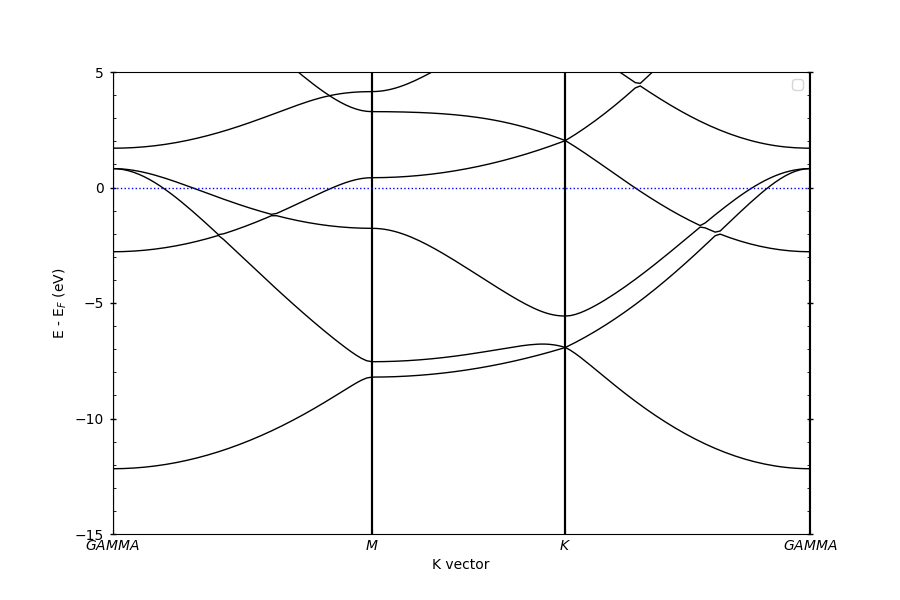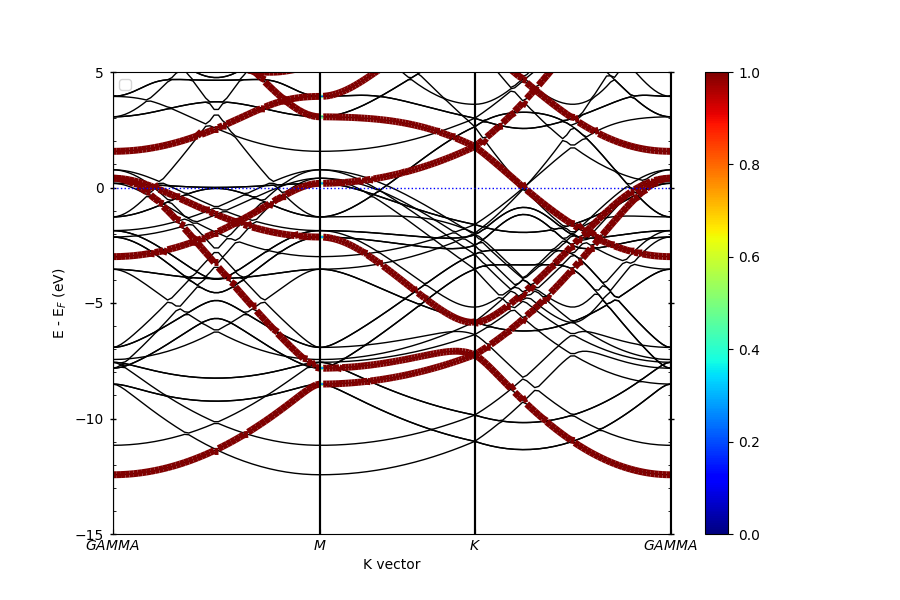Note
Go to the end to download the full example code.
Unfolding Band Structure#
Unfolding Band Structure example.
First download the example files with the code below. Then replace data_dir below.
Downloading example#
supercell_dir = pyprocar.download_example(save_dir='',
material='MgB2',
code='vasp',
spin_calc_type='non-spin-polarized',
calc_type='supercell_bands')
primitive_dir = pyprocar.download_example(save_dir='',
material='MgB2',
code='vasp',
spin_calc_type='non-spin-polarized',
calc_type='primitive_bands')
importing pyprocar and specifying local data_dir
import os
import numpy as np
import pyprocar
supercell_dir = os.path.join(
pyprocar.utils.DATA_DIR,
"examples",
"MgB2_unfold",
"vasp",
"non-spin-polarized",
"supercell_bands",
)
primitive_dir = os.path.join(
pyprocar.utils.DATA_DIR,
"examples",
"MgB2_unfold",
"vasp",
"non-spin-polarized",
"primitive_bands",
)
Plotting primitive bands#
pyprocar.bandsplot(
code="vasp", mode="plain", fermi=4.993523, elimit=[-15, 5], dirname=primitive_dir
)

----------------------------------------------------------------------------------------------------------
There are additional plot options that are defined in the configuration file.
You can change these configurations by passing the keyword argument to the function.
To print a list of all plot options set `print_plot_opts=True`
Here is a list modes : plain , parametric , scatter , atomic , overlay , overlay_species , overlay_orbitals
----------------------------------------------------------------------------------------------------------
(<Figure size 900x600 with 1 Axes>, <Axes: xlabel='K vector', ylabel='E - E$_F$ (eV)'>)
Unfolding of the supercell bands#
Here we do unfolding of the supercell bands. In this calculation, the POSCAR and KPOINTS will be different from the primitive cell For the POSCAR, we create a 2 2 2 supercell from the primitive. For the KPOINTS, the paths need to be changed to reflect the change in the unitcell
pyprocar.unfold(
code="vasp",
mode="plain",
unfold_mode="both",
fermi=5.033090,
dirname=supercell_dir,
elimit=[-15, 5],
supercell_matrix=np.diag([2, 2, 2]),
)

____ ____
| _ \ _ _| _ \ _ __ ___ ___ __ _ _ __
| |_) | | | | |_) | '__/ _ \ / __/ _` | '__|
| __/| |_| | __/| | | (_) | (_| (_| | |
|_| \__, |_| |_| \___/ \___\__,_|_|
|___/
A Python library for electronic structure pre/post-processing.
Version 6.3.2 created on Jun 10th, 2021
Please cite:
Uthpala Herath, Pedram Tavadze, Xu He, Eric Bousquet, Sobhit Singh, Francisco Muñoz and Aldo Romero.,
PyProcar: A Python library for electronic structure pre/post-processing.,
Computer Physics Communications 251 (2020):107080.
Developers:
- Francisco Muñoz
- Aldo Romero
- Sobhit Singh
- Uthpala Herath
- Pedram Tavadze
- Eric Bousquet
- Xu He
- Reese Boucher
- Logan Lang
- Freddy Farah
--------------------------------------------------------
There are additional plot options that are defined in a configuration file.
You can change these configurations by passing the keyword argument to the function
To print a list of plot options set print_plot_opts=True
Here is a list modes : plain , parametric , scatter , atomic , overlay , overlay_species , overlay_orbitals
--------------------------------------------------------
(<Figure size 900x600 with 2 Axes>, <Axes: xlabel='K vector', ylabel='E - E$_F$ (eV)'>)
Total running time of the script: (0 minutes 20.196 seconds)